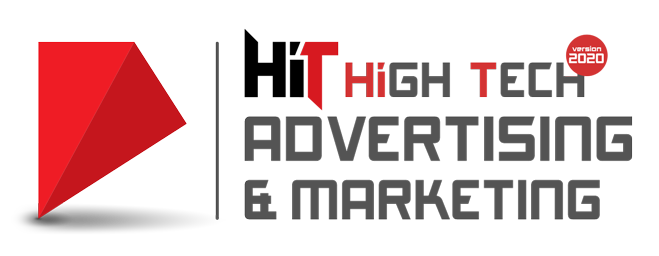In today’s fast-paced and competitive business landscape, employee productivity is a key driver of organizational success. Companies are constantly seeking ways to maximize their workforce’s potential and achieve their goals. One proven strategy that is gaining widespread recognition is workplace coaching.
Introduction
What is Workplace Coaching?
Workplace coaching is a collaborative process between a coach and an employee, aimed at unlocking the employee’s full potential and improving their performance. It involves providing guidance, support, and feedback to help employees set and achieve goals, develop new skills, and overcome challenges. Coaching can be conducted in a variety of formats, including one-on-one sessions, group workshops, and online programs.
Why is Employee Productivity Important?
Employee productivity refers to the amount of work an employee can produce in a given time frame. It is a critical factor for businesses, as it directly impacts their bottom line. Productive employees are more efficient, effective, and engaged in their work, leading to increased profitability and overall success for the organization.
The Undeniable Link Between Coaching and Employee Productivity
Research has consistently shown a strong correlation between coaching and employee productivity. When employees receive coaching, they are more likely to:
- Set clear and achievable goals
- Develop the skills and knowledge needed to succeed
- Increase their motivation and engagement
- Improve their communication and collaboration skills
- Overcome challenges and obstacles
These factors all contribute to increased productivity and better performance on the job.

How Coaching Improves Employee Productivity
The positive impact of coaching on employee productivity is multifaceted and can be seen in various areas of an individual’s work life. Here’s how coaching works its magic:
- Goal Setting and Action Planning: Coaching helps employees set clear, specific, and measurable goals that align with the overall objectives of the organization. This provides a sense of direction and purpose, motivating employees to strive for excellence. Coaches also assist in developing actionable plans to achieve these goals, breaking down complex tasks into manageable steps and ensuring progress is tracked and celebrated.
- Skill Development and Enhancement: Coaching identifies individual strengths and weaknesses, enabling employees to focus on developing the skills most critical for their success. Through personalized feedback and guidance, coaches help employees acquire new competencies, improve existing ones, and stay ahead of the curve in their field.
- Increased Self-awareness and Motivation: Coaching encourages self-reflection and self-discovery, empowering employees to better understand their values, motivations, and areas for growth. This increased self-awareness leads to higher levels of motivation, engagement, and job satisfaction, as employees feel more connected to their work and its impact.
- Improved Communication and Collaboration: Coaching enhances interpersonal skills such as active listening, empathy, and effective communication. This leads to stronger relationships with colleagues and managers, fostering a collaborative work environment where ideas flow freely and conflicts are resolved constructively.
- Enhanced Problem-solving and Decision-making Abilities: Coaching equips employees with the tools and techniques to analyze problems critically, identify potential solutions, and make informed decisions. This not only improves individual performance but also contributes to the overall success of the team and organization.
By focusing on these key areas, coaching empowers employees to take ownership of their development, overcome challenges, and reach their full potential. The result is a more productive, engaged, and satisfied workforce that drives organizational success.
The Benefits of Coaching for Organizations
Investing in coaching is not just beneficial for employees; it yields significant returns for organizations as a whole. Here are some of the key advantages companies can expect when implementing coaching programs:
- Increased Employee Engagement and Retention: When employees feel valued, supported, and empowered to grow, their engagement and commitment to the organization naturally increase. Coaching fosters a positive work environment where individuals feel connected to their work and motivated to contribute their best, leading to higher retention rates and reduced turnover costs.
- Improved Performance and Profitability: As employees develop new skills, enhance their knowledge, and refine their decision-making abilities through coaching, their individual performance improves. This translates to increased productivity, efficiency, and ultimately, better financial outcomes for the company.
- Stronger Company Culture and Values: Coaching can help instill and reinforce desired company values and behaviors, creating a cohesive and aligned workforce. When employees share a common understanding of the organization’s mission and values, they are more likely to work collaboratively towards achieving shared goals.
- Reduced Absenteeism and Turnover: Engaged and satisfied employees are less likely to miss work or seek employment elsewhere. Coaching can address underlying issues that contribute to absenteeism and turnover, such as burnout, lack of motivation, or feeling undervalued.
- Enhanced Leadership and Management Capabilities: Coaching not only benefits individual contributors but also plays a crucial role in developing leadership and management skills. By providing guidance and support to managers, coaching helps them become more effective in their roles, leading to improved team performance and overall organizational effectiveness.

These benefits are not just theoretical; numerous studies and real-world examples demonstrate the tangible impact of coaching on organizational success. In the next section, we will share compelling case studies that highlight the transformative power of coaching in the workplace.sharemore_vert
Case Studies: Real-World Examples of Coaching Success
The impact of coaching isn’t just theoretical; it’s backed by numerous real-world examples of organizations that have experienced remarkable transformations through coaching programs. Let’s look at a couple of compelling case studies:
Case Study 1: Tech Giant Boosts Employee Engagement and Retention
A leading technology company implemented a coaching program for its mid-level managers, focusing on leadership development, communication skills, and team management. The results were impressive:
- Employee engagement scores increased by 15% within a year of the program’s launch.
- Voluntary turnover among coached managers decreased by 20%, saving the company significant recruitment and training costs.
- Managers reported feeling more confident in their abilities and better equipped to lead their teams.
- Teams led by coached managers experienced improved performance, as evidenced by higher productivity, increased collaboration, and greater innovation.
Case Study 2: Manufacturing Company Improves Productivity and Safety
A manufacturing company introduced a coaching program to address issues related to safety, productivity, and employee morale. The program focused on empowering employees to take ownership of their work, identify areas for improvement, and implement solutions. The results were significant:
- Safety incidents decreased by 30% as employees became more aware of potential hazards and took proactive measures to prevent accidents.
- Productivity increased by 10% as employees identified inefficiencies in processes and developed innovative solutions.
- Employee morale and job satisfaction improved, leading to a more positive and collaborative work environment.
These case studies illustrate the power of coaching to drive positive change across a wide range of industries and organizational levels. By investing in coaching, companies can unlock the hidden potential of their workforce, improve performance, and create a more engaged and productive workplace culture.

Implementing a Coaching Program: A Step-by-Step Guide
The decision to invest in coaching is a significant one, but the rewards can be transformative for your organization. Here’s a roadmap to guide you through the implementation process:
- Identifying the Need for Coaching:
- Analyze Performance Data: Review employee performance metrics, engagement surveys, and feedback to identify areas where coaching could make a difference.
- Set Clear Objectives: Define what you hope to achieve through coaching, whether it’s improving specific skills, boosting productivity, or enhancing leadership capabilities.
- Secure Leadership Buy-In: Gain support from top management to ensure the program has the necessary resources and commitment.
- Selecting the Right Coach:
- Internal vs. External: Decide whether to utilize existing talent within your organization or hire external coaches with specialized expertise.
- Qualifications and Experience: Look for coaches with relevant credentials, experience, and a proven track record of success.
- Compatibility and Chemistry: Ensure a good fit between the coach and the coachee to foster a productive relationship.
- Developing a Coaching Plan:
- Tailored Approach: Customize the coaching plan to address the specific needs and goals of each individual or team.
- Clear Expectations: Establish clear expectations for both the coach and the coachee regarding the frequency and duration of sessions, topics to be covered, and desired outcomes.
- Confidentiality: Ensure confidentiality to create a safe and trusting space for open communication.
- Measuring the Impact of Coaching:
- Track Progress: Use key performance indicators (KPIs) and regular feedback to monitor the progress of individuals and teams throughout the coaching process.
- Evaluate Effectiveness: Assess the overall impact of the coaching program on employee productivity, engagement, and organizational goals.
- Gather Feedback: Solicit feedback from coaches, coachees, and stakeholders to identify areas for improvement and refine the program for future iterations.
- Continuous Improvement:
- Refine and Adapt: Use the feedback gathered to continuously improve the coaching program.
- Invest in Resources: Provide coaches with ongoing training and development opportunities to ensure they are equipped with the latest tools and techniques.
- Promote a Coaching Culture: Encourage a culture of learning and development within your organization, where coaching is seen as a valuable tool for personal and professional growth.
By following these steps, you can create a successful coaching program that empowers your employees, drives productivity, and contributes to the long-term success of your organization.
Conclusion: Unlock Your Team’s Full Potential with HiT
The undeniable link between coaching and employee productivity is clear. As demonstrated throughout this article, investing in coaching isn’t merely an expense; it’s a strategic move that yields exponential returns. At Hit Land Co., we’re not just about high-tech business solutions; we’re about empowering your team to reach their full potential.
Through our tailored coaching and consultation services, we equip your employees with the tools, knowledge, and confidence they need to excel. We help them set ambitious goals, develop critical skills, and navigate challenges with resilience. This translates into increased productivity, higher engagement, and a more positive workplace culture that drives your business forward.
Don’t let your team’s potential remain untapped. Partner with Hit Land Co. and embark on a transformative journey towards greater productivity, profitability, and success. Contact us today to discover how our coaching and consultation services can elevate your business to new heights.
Invest in your people, invest in your future – invest in Hit Land Co.







